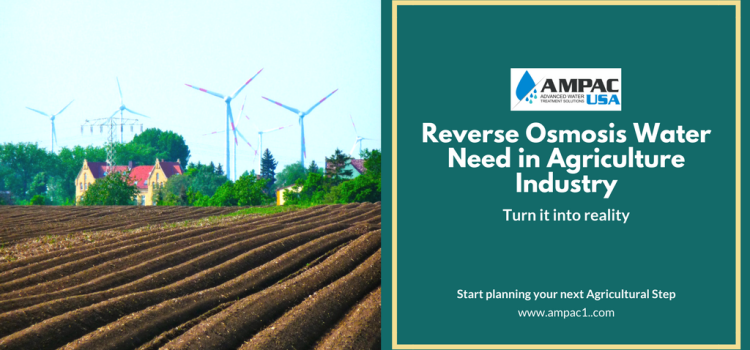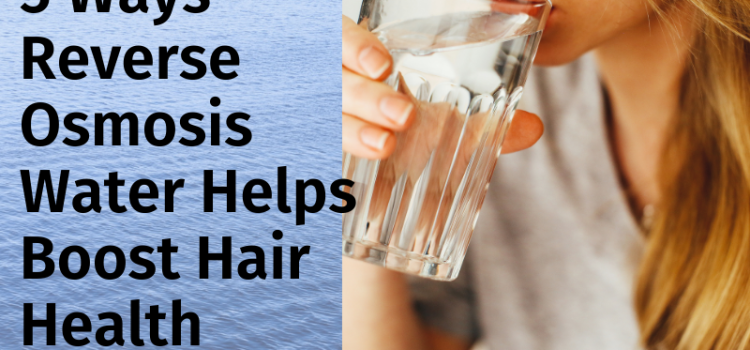Reverse Osmosis Water Need in Agriculture Industry
The need for clean and reverse osmosis water is growing day by day and one of the industries that needs it most is the agriculture industry. It is a well-known fact that the United States is one of the leading agricultural producers of the world. In 2014, this industry provided employment to over 827 thousand people across the nation and the number of farms were more than 2 million. The real estate value of farms was estimated at more than 2 trillion USD.
Strong Exports
The country exports agricultural products to key nations like Canada, China, Mexico and the amount of these exports exceeded 133 billion USD in 2015. This data makes it clear that agriculture industry is playing a key role in strengthening the economic abilities of the nation.
Agricultural Applications
As agricultural production process needs a lot of this precious resource, the water used to sustain livestock and grow fresh produce is known as agriculture water. Without it, growing grains, fruits & vegetables and raising livestock is not possible. And without livestock, fruits, grains, and vegetables, humans can’t survive. Apart from growing produce and sustaining livestock, it is also used for crop cooling, irrigation, frost control and pesticide & fertilizer applications.
Consumption Data
According to the data shared by United States Geological Survey, about 65 percent of freshwater withdrawals of the world (except for thermoelectric power). It is also estimated that about 140 million gallons of water was used for agriculture from 1985 to 2000.
The Need for Purity
Agriculture industry needs pure reverse osmosis water to ensure perfect health of humans. If livestock is fed contaminated water or irrigation is done with it, the food you eat would also be contaminated and you will fall ill easily. In the earlier times, groundwater was considered to be pure but due to factors like industrial waste dumping and pollution, it is not that reliable anymore. But still, most of irrigation is done with surface and groundwater.
Some of the other sources include open canals, streams, rivers, and irrigation ditches, impounded water such as lakes, reservoirs, and ponds, groundwater from wells, water collected in cisterns and rain barrels, municipal water systems and rainwater.
Why Reverse Osmosis is the Answer?
If you are thinking that the world is doing fine by using natural sources of water for agricultural use and things should go on as they are then you should know that you are not on the right track. According to an estimate by the United Nations in 2003, it was revealed that 2 million tons of sewage, agricultural and industrial waste is discharged into water every day.
So, be smart and make use of technologies like reverse osmosis to make this precious resource contamination-free and health-friendly. This technology, offered by leading brands like AMPAC USA ensures that you get access to purest water by trapping all visible and invisible contaminants. This process never changes the taste or smell of this clear liquid while ensuring that it has adequate minerals.
To select the right reverse osmosis system, you can visit the website of AMPAC USA or talk to our skilled customer support executives. It will ensure that you select the right one from our wide range of products. If you can’t find a suitable product, you can also request our engineers to visit your site, map your needs and create a custom-made system for you. As we have got more than 30 years of experience and exposure to serving the needs of clients in over 40 nations, we are sure we’ll meet your expectations flawlessly as well. Call us today!
AMPAC USA factory, 5255-5265 State Street, Montclair, CA 91763 USA
Toll Free: +1 (877) 611-8530 International: +1 (818) 700-8015 Main Office USA: +1 (909) 548-4900
London UK: +44 (20) 7993-8638 Mexico City: +52 (55) 5350-0716 Fax: +1 (909) 548-4901
Sources
- https://www.cdc.gov/healthywater/other/agricultural/index.html
- https://www.statista.com/topics/1126/us-agriculture/
- https://www.ampac1.com/applications/rosystems.html
- https://www.pacinst.org/wp-content/uploads/2013/02/water_quality_facts_and_stats3.pdf









